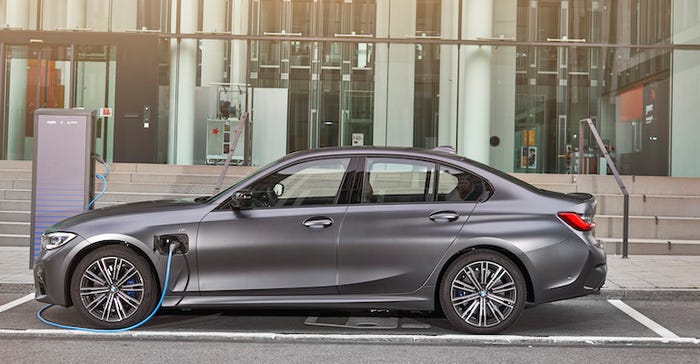Not everybody wants an SUV or a crossover—some people still want a traditional sedan or sports car in their lives. The plug-in hybrid part is icing on the cake!
November 22, 2021

BMW 330eBMW
US carmakers are winding down the availability of traditional sedans in their product lineups in favor of pickup trucks, sport utility vehicles (SUVs), and crossover sport utility vehicles (CUVs). They have left the traditional sedan and coupe market segment largely to European manufacturers, who, with a smattering of Japanese and Korean makers, continue to embrace the idea that not every vehicle on the highway needs to be a big box on wheels.
Not only that, but they are also adding plug-in hybrid technology to enhance fuel economy and reduce operating costs. By combining an electric motor with the gasoline engine it is possible to collect the energy wasted during slowing down and braking and reapplying it during acceleration to improve both performance and fuel economy. Taking this one step further, a small or medium-sized battery pack can be charged at home, the so-called Plug-in Hybrid Electric Vehicle, (or PHEV) provides a level of electric vehicle operation before the normal hybrid mode kicks in.
If you consider the average US commute to work each day is 16 miles each way, a small battery can provide 30-40 miles of range, meaning that many commuters will not have to use any gasoline during their daily commute. Because the range is limited the battery can be much smaller than that used in a Battery Electric Vehicle (BEV) resulting in less weight, less cost, and a shorter charging time.
Car companies look at PHEVs as a transition solution to get people used to plugging in their vehicles every night and as a way to address the range anxiety that some potential BEV buyers have expressed. The downside is the need to carry two complete drive systems in the vehicle, adding weight and complication. But for many people, a PHEV is a viable solution to their transportation and commuting needs.
For some people, the traditional sedan, with its agile handling and manageable size is still the type of vehicle they want to own. Making it a PHEV just adds icing on the cake. Here are 14 plug-in hybrid vehicles that are available for 2022 that range in price from just over $27,000 to over a cool half a million. Okay, that last one is a Ferrari, but it is worth noting that PHEV systems are more likely to show up on pricey luxury sedans. We have listed them from least expensive to most expensive and also included the EPA fuel economy rating and the distance that they can travel in EV mode only.
BONUS: Look at Slide 15 For a Peek into the Future!
First, let’s look at the Hyundai Ioniq
Kevin Clemens is a Senior Editor with Battery Technology.
About the Author(s)
You May Also Like





